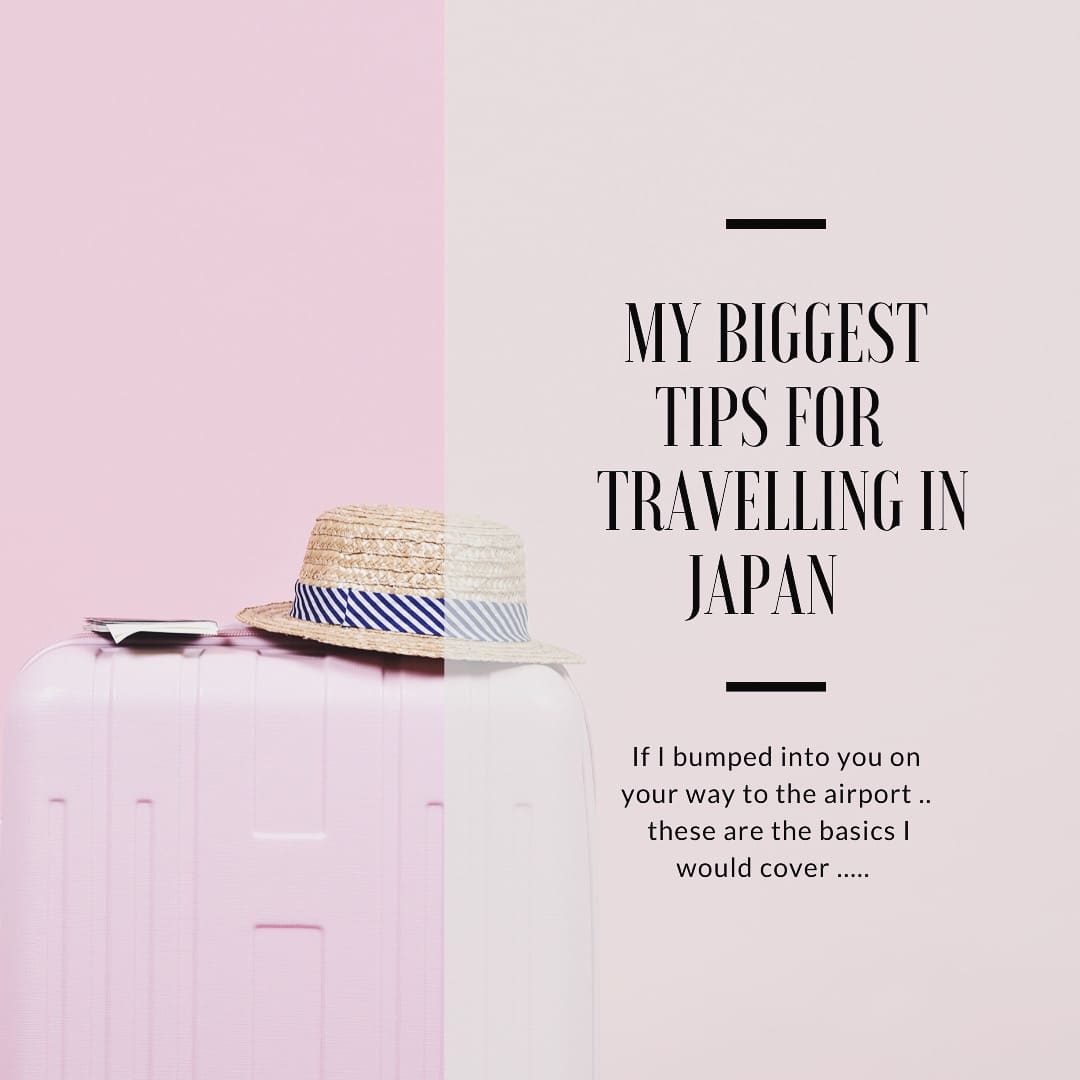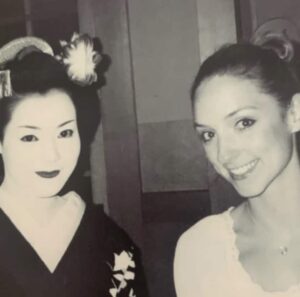
If I met bumped into you at your closest airport and had just a minute before you boarded to list off my best tips on making your Japan trip the best ( but also help you be a mindful/ culturally sensitive traveller…) these are the points I’d quickly cover.
Here goes…. ( in no particular order)
Always wear nice socks ( or have a little pair of ankle socks in your bag) and leave the shoes with a gazillion buckles or tricky laces at home
Most people know that the shoes off in Japan thing is a thing. But many people forget about the actual logistics. Japanese people almost always slide shoes on and off at an exit and its just the foreigners looking for a spot to sit to under their trainers or unhook their boots.
Oh and also? Leave the socks with the hole in one toe at home… no-one will ever know at home… but in Japan.. they sure will!
If you’re an early riser, plan your mornings or do the “get to know the streets”/ explore section of your holiday before 10-11am
In Japan, a large portion of museums, tourist attractions, restaurants ( even some restaurants that call themselves “brunch spots” and department stores don’t open until 10-11am. So make sure you double check before you head out. An extra tip? Many main attractions close the day after a national holiday so keep that in mind too. Here is my list of places in Tokyo that are open before 11AM.
If you are vegan, gluten free or have additional dietary requirements – do a food tour on one of the first few days..
Not sponsored but I highly recommend taking part in a Foodie Adventure Japan tour. They will take you out to yummy restaurants but also give you a head start on what to look for in supermarkets, convenience stores and how to ask for certain items.
Don’t rely on public wifi so prearrange portable wifi or a SIM card ( also can purchase at the airport once you arrive in Japan)
Free Wifi is available in some places but I have never found it to be reliable enough to get around with google maps. Japan is a country where you need to get lost in to have the experience so.. in order to do it properly and wander down all those amazing laneways… you’ll need some hand-holding for how to get yourself back to your station later.
Be thoughtful and don’t speak on your phone on the train.
Talking on your phone in Japan is seen as the biggest middle finger to other passengers – this is their travel time too.
If you must answer the “done thing” is to quietly tell the person you’ll call them back, jump off at the next station to take the call ( Japanese trains are so frequent and reliable that this is actually an option) OR if on a shinkansen ( bullet train) you can move between to the little “hallways” in between carriages.
Pack / hang onto little plastic bags – you’ll need them for your own rubbish
This is where parents of young children travelling to Japan have an advantage – they have the little nappy/ diaper bags on hand and / or a stroller to tie them to.
Rubbish bins are rarely placed on most streets or in local parks. ( For this reason I always get such a kick of all the rubbish bin availability at places like Tokyo Disneyland!
Why is it hard to find a bin? The volume of people would be hard, from a logistical perspective, to keep up with, for starters. But also the recycling system is quite complex and is taken on as the individual’s responsibility so the idea is that one would then take care of their own rubbish and its disposal.
Also eating and walking isn’t considered polite in Japan so it is unusual for someone to have an empty chocolate bar wrapper they need to dispose of as it’s been eaten at home, with their meal or in an eat-in space in a cafe. It takes a while to get used to.
Another reason is a counter terrorism measure ( mostly seen when even the bullet train platform bins are “locked up” when a major politician or an international summit is taking place. ) Many people like to say this is the only reason for no bins but I disagree and my opinion is that it is more of a cultural approach – the volume of people in Japan calls for everyone to play their part in keeping their country tidy.
I usually hold onto my rubbish until I find a public restroom, convenience store or take home/ to my hotel.
You do need cash as well as your cards
Cash means that you’ll be able to make full use of vending machines ( yes, they accept notes too) and even some of my favourite shops are cash only,.
Download the Ecbo Cloak app
This app shows you were the empty coin lockers are and what other tourist offices etc will store your luggage ( while you shop or while you wait to check into your accommodation.)
Know what to do if you fall ill or have a medical emergency
I have written all of my tips ( language and phone numbers) in a detailed blog post here.
If, like me, you’re not the standard Japanese size, pack all the clothing and footwear you need
I find footwear almost impossible to find in Japan. Larger sized clothing can also be trickier. So make sure you have what you need as even GAP and ZARA don’t often stock the largest sizes.
Don’t touch the taxi door
The back left passenger door opens and closes automatically.
Drivers get really upset if you try and operate the door yourself as it messes with the mechanics (or something technical … anyway).
When it is time to get out at your destination, the driver will open the door after you have paid the cab fare.
I wrote a lot more about taxis here.
Throw away your own wrappers and cups etc after eating at a food court, Starbucks, dine-in sections of convenience stores and fast food restaurants
Once you’ve lived in Japan for even a few weeks you’ll realize that this should really be common sense world-wide. I mean, how hard is it to take your tray to the rubbish bin at McDonalds and put your left over milkshake cup and fries cardboard in the bins provided?
No one expects you to have a spray’n’wipe ready in your purse so don’t get too pedantic or anything.
It is kind to cleaning staff, to people waiting for a table and just makes sense.
And guess who are the only people who don’t clear up after themselves? The foreigners… *cringe*
Have a few easy throw on and off layers
I find Japan to be overly air-conditioned and overheated indoors ( including in the trains). So bring something to take on and peel off , depending on the season.
Have some language cheats up your sleeve..
Now I read so many tips like ” learn how to say please and thank you and excuse me” before you go. Sorry to be controversial ( and a bit of a party pooper) but Japanese people will know that much in English so it’s nice to try out ( and very kind) those phrases I would focus more on having a back up if communication doesn’t go well. I have written lots of tips on what to do if you hit a major language barrier here.
If you’re watching your cash, eat out at lunch over dinner
You can eat almost the exact same food at dinner and it can literally be one 10th of the price. Set menus allow for exquisite, balanced meals at fancy restaurants for between 1000-2000 yen per person. And if even that is beyond your reach? I recommend making full use of Japanese convenience stores ( I wrote all about my tips on convenience stores here.)
Wait outside of the train doors just to the left or right ( as per the markings on the platform)
Like in most countries, it is considered impolite to just rush onto the train. You need to let the passengers out and then board in the order you’ve been waiting at the platform.
If you’re out for a night of lots of drinking ask about nomihoudai options
( Please note these options are almost always only options in izakayas ( Japanese style pubs/ diners) and chain restaurants in the evenings. This is also the most common way to drink as a group while out at a karaoke box chain.
Nomihoudai means all-you-can-drink.
How on earth does this work?
Well, usually you will need to ask for this option when you make a reservation or at least before you begin ordering your meal.
A nomihoudai ( all you can drink) option , for example, will be something like 4000 yen per person for 90 minutes for all you can drink. Be warned though – you will need to ask what drinks are included in that selection. (It’s unlikely that it will be more than house spirits or the house red or white wine or their draught beer so you’ll need to check. )
Phrases to show to a restaurant ( I won’t write out how to say them as I think showing this would be the most helpful)
飲み放題コースありますか? ( Do you have an all-you-can-drink course option)
Note that some restaurants will have different all-you-can-drink tiers such as casual, standard, premium etc.
Extra tip- want to look like a pro when re-ordering the same drink again? Hold up the glass from the previous drink and say OKAWARI-KUDASAI ( same again, please)
If you’ve enjoyed this article I think you’ll also like my tips on how not to appear completely clueless when you first arrive in Japan





